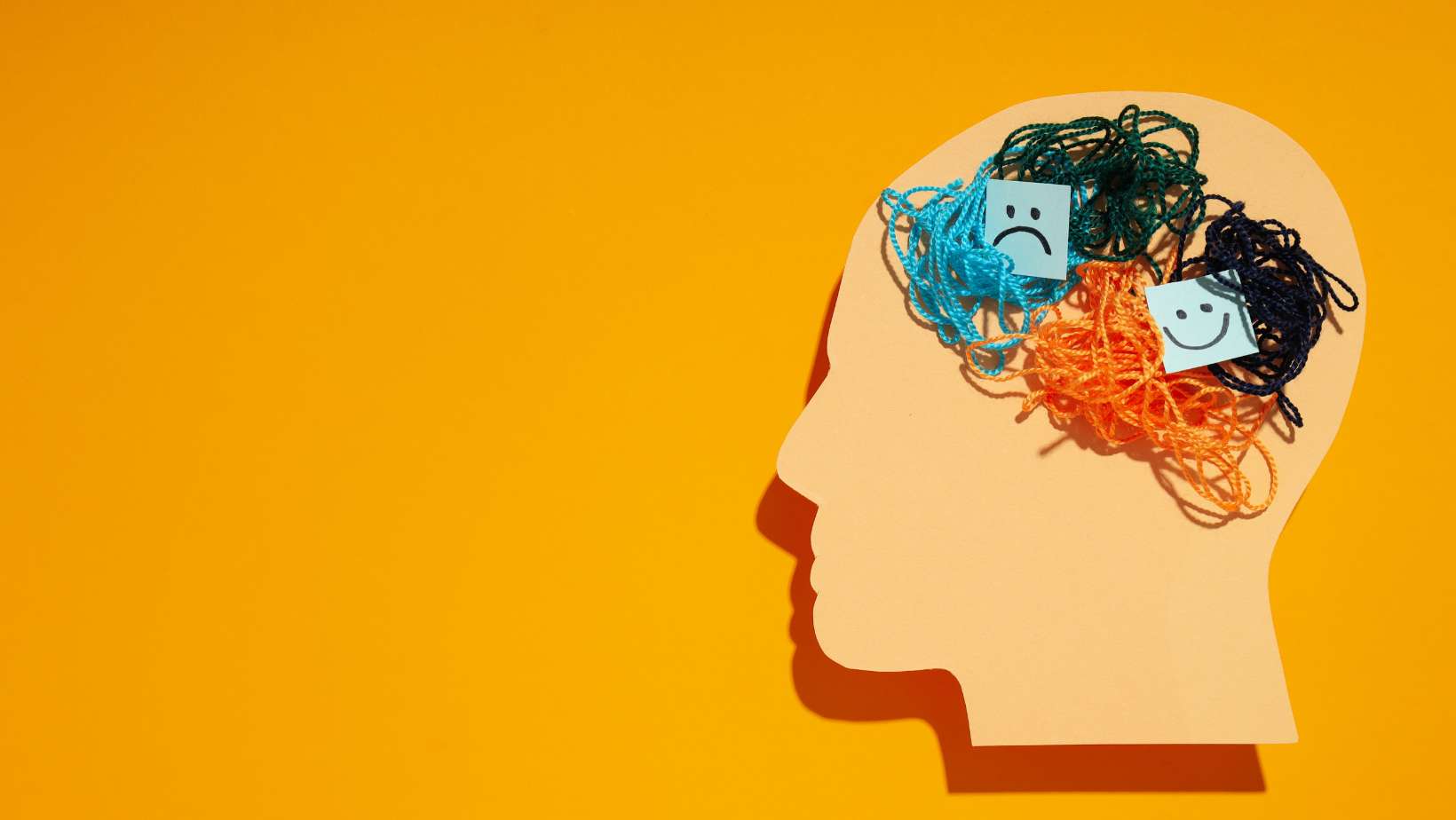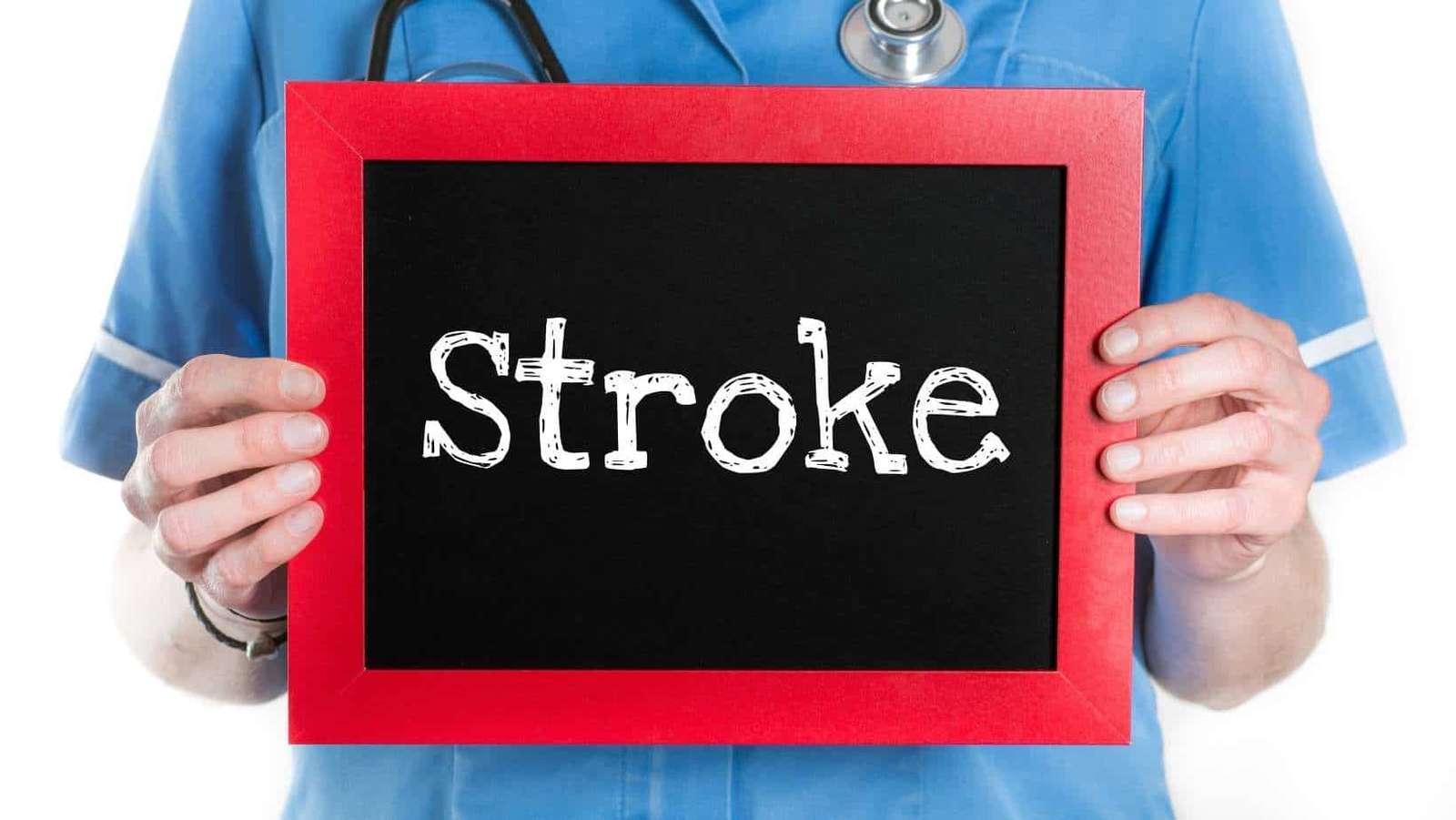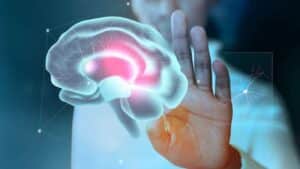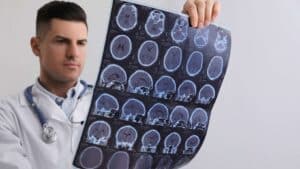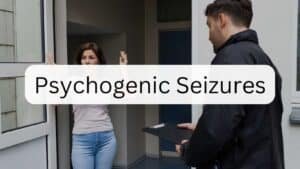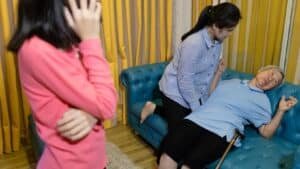What to expect Life After a Stroke
Life After a Stroke: A Comprehensive Guide to Recovery and What to Expect
A stroke is a critical medical emergency affecting millions worldwide, with India witnessing over 25 lakh stroke cases annually. Unfortunately, less than one percent of these cases receive timely treatment, making strokes a significant health concern in the country. Whether the stroke is caused by a blocked blood vessel (ischemic stroke) or a ruptured blood vessel (hemorrhagic stroke), survivors often face permanent and debilitating deficits.
Life After a Stroke survivor's journey is challenging, marked by numerous battles to regain a sense of normalcy in their lives. In this extensive guide, we will explore the immediate aftermath of a stroke and the long-term care issues and problems that may arise after being discharged from the hospital. Additionally, we will discuss the available options for managing these post-stroke challenges effectively.
Life After a Stroke: An Overview
The Life After a Stroke is an intricate and multi-faceted process. It encompasses not only the physical recovery of the survivor but also the emotional and psychological adjustments needed for the individual and their support network. Here is what to expect after a stroke:
- Physical Impairments: Stroke survivors often experience physical impairments, such as hemiparesis (weakness on one side of the body) or paralysis. Spasticity (muscle tightness) may develop with time, causing muscle loss due to limited use. Physiotherapy and rehabilitation are essential to combat these issues.
- Communication Difficulties: Aphasia, a condition affecting speech, language, and communication, may arise post-stroke. Speech therapy and specialized exercises are key components in regaining communication skills.
- Cognitive Challenges: Stroke survivors may encounter cognitive issues, including memory problems, reduced attention span, and difficulty with problem-solving. Occupational therapy can be invaluable for addressing these challenges.
- Emotional Impact: Coping with Life After a Stroke emotional impact is ongoing. Many survivors experience depression, anxiety, frustration, and helplessness. Seeking support from mental health professionals, counselors, and support groups can aid in managing these emotions.
- Changes in Daily Living: Stroke often necessitates adjustments to daily activities. Simple tasks such as bathing, dressing, and preparing meals may require adaptations. At the same time, home modifications may be essential for safety and accessibility.
- Medication and Monitoring: Stroke survivors typically require long-term medication to manage risk factors that contributed to the stroke, like high blood pressure. Regular medical check-ups and monitoring are vital.
- Support System: The role of family and friends is crucial in Life After a Stroke survivor's recovery. Building a strong support system is indispensable for both emotional and practical assistance.
Challenges Post-Discharge
After being discharged from the hospital, stroke survivors face several hurdles:
- Rehabilitation and Therapy: Ongoing rehabilitation and therapy are imperative for regaining lost functions and preventing complications. Stroke survivors may require physical, speech, and occupational therapy, creating accessibility and commitment challenges.
- Medication Management: Successfully managing medications, including proper organization and adherence to prescribed regimens, can be complicated. Organizers and medication management apps may help ensure timely intake.
- Home Modifications: Stroke survivors may need home modifications to enhance safety and accessibility. Occupational therapists can evaluate and recommend necessary adjustments.
- Emotional Support: Coping with the emotional impact on Life After a Stroke is an ongoing process. Accessing emotional support from therapists, support groups, and social networks is crucial.
- Financial Strain: Stroke care, rehabilitation, and long-term medical needs can significantly burden survivors and their families. Navigating the financial aspects, including insurance coverage and support systems, can be complex.
- Diet and Lifestyle Changes: Significant dietary and lifestyle changes may be necessary to manage risk factors and promote recovery. Guidance from healthcare providers and gradual adaptation to changes are essential.
Managing Life After a Stroke Challenges
While Life After a Strokestroke challenges can be overwhelming, there are various ways to manage them effectively:
- Rehabilitation and Therapy: Commit to recommended rehabilitation and therapy. Consistent, dedicated efforts can lead to significant improvements.
- Medication Adherence: Use tools like pill organizers and medication management apps to ensure timely intake. Regular check-ups with healthcare providers are essential for monitoring progress and making necessary adjustments.
- Home Modifications: Consult with an occupational therapist to evaluate and implement home modifications. A safe and accessible living environment is crucial.
- Emotional Support: Seek emotional support from therapists, support groups, and your social network. Open communication and expressing your feelings help alleviate emotional distress.
- Financial Planning: Engage with financial advisors or social workers to navigate the financial aspects of stroke recovery. Explore available resources and support options.
- Diet and Lifestyle Changes: Work with a registered dietitian to create a dietary plan supporting recovery and addressing risk factors. Embrace lifestyle changes gradually, seeking guidance from healthcare providers.
In conclusion, life after a stroke is marked by numerous challenges that require a comprehensive approach. Stroke survivors and their families should be well-informed and proactive in addressing these challenges. Building a strong support system, adhering to medical recommendations, and seeking professional guidance are key elements in the journey to recovery and improving the quality of life after a stroke.
Life After a Stroke Recovery: The Brain's Healing Process
The human brain is a complex and remarkable organ. While neurologists continue to uncover its mysteries, it remains resilient and capable of recovery when provided with the right support. The brain can regenerate and restructure its cells to compensate for lost functions and aid in recovery.
One key aspect to remember is that stroke patients can continue to recover for up to two years from the initial stroke event, making it essential to stay determined and focused on recovery. The brain's remarkable capacity for adaptation and change should instill hope and motivation throughout recovery.
Life After a Stroke Challenges and Their Solutions
A stroke can result in many physical and cognitive challenges for survivors. Here are some common issues faced by stroke patients and ways to address them:
- Weakness or Paralysis: Weakness on one side of the body, known as hemiparesis or paralysis, is a common consequence of stroke. Without proper therapy, individuals may develop spasticity or tightness in muscles and experience muscle atrophy due to underuse. Regular therapy routines, guided by a therapist, can help strengthen muscles, reduce spasticity, and assist with daily activities.
- Speech and Language Deficits: Stroke often leads to speech and language deficits. Speech routines and exercises have proven extremely beneficial in recovering communication skills. Working with a speech therapist is a key step in regaining these abilities.
- Swallowing Difficulties: Many stroke patients experience difficulty swallowing. Contrary to the belief that water is easy to swallow, it should only be offered to patients who pass a swallowing test. Mishandling water can lead to water entering the lungs, increasing the risk of pneumonia. Swallowing exercises, guided by a speech therapist, can aid in regaining this crucial function.
- Bladder and Bowel Control: Some stroke survivors may become incontinent and require assistance with urination and bowel movements. In such cases, medications may be used to facilitate these bodily functions. It is essential to work closely with healthcare professionals to manage these issues.
- Depression: Up to 50% of stroke patients may experience depression, which can significantly hinder their progress in therapy and overall recovery. Maintaining a positive and elevated mood is vital. Seeking support from mental health professionals and participating in support groups can greatly assist in overcoming depression.
Life After a Stroke Recovery: An Ongoing Journey
While recovery is possible, not all stroke patients will regain full independence. According to the American Stroke Association, around 35-40% of stroke survivors experience limitations in basic activities of daily living six months after their stroke. Another 40% may experience moderate to severe impairments, and 10% may require care in a nursing home or another long-term care facility.
References:
Anxiety and Depression
Anxiety and depression are common mental health conditions that can affect anyone, regardless of age, gender, or background. They often go hand in hand, and understanding their relationship is crucial for effective anxiety and depression treatment and support. However, one question usually arises: Are these two disorders present or related? Below, we will discuss a few important caveats that help us differentiate between the two disorders and if they can occur together.
Let’s Start With The Basics. What Is Anxiety And Depression?
Anxiety: A long time ago, when our ancestors roamed the grasslands in Africa, they often felt anxious, thinking about the predators around them or the weather and food availability. It was a valid response, as their fears were confirmed. However, nowadays, most of our fears live in our minds, and we suffer the same anxiety that used to be somewhat protective in ancient times to survive. When this feeling becomes persistent, and we cannot let go of it, it's called worrying. This worry leads to an unending cycle of thoughts about all possible bad outcomes, which leads to an uncomfortable, loss of control-like feeling called anxiety. People with anxiety behave just like our ancestors did in the forests: always alert, looking out for danger, and looking to survive. Our ancestors, though, took rest once they were safe and had food, but we cannot seem to do that. This never-ending cycle of thought drives us crazy. It isn't easy to concentrate, sit still or sleep. We feel edgy, irritable, sweaty and angry. Soon, we begin to lose our grip on life, our work gets affected, relationships break off, addictions start, and we lose control over everything that was once working for us, only to worsen the feeling of losing control.
Depression: This is a state of feeling low and demotivated. Usually, it starts as a need for more interest and motivation. Then, it progresses to lethargy, a lack of pleasure and passion in life. Individuals feel worse in the morning and improve as the day progresses. Suppose sadness, emptiness or lack of interest persists for over two weeks and doesn’t change even in happier circumstances. In that case, it’s a sign of a depressive disorder.
Other signs of a depressive disorder are frequent aches and pains, decreased sleep, guilt and worthlessness, loss of sex drive, lack of initiative in relationships, self-hurt and suicide.
How Are Anxiety And Depression Related?
Anxiety and depression often co-occur, meaning that if you have one, you are at a higher risk of developing the other. This coexistence can make it challenging to diagnose and treat these conditions effectively. Both anxiety and depression affect sleep, sex drive, concentration, moods and energy levels read more about Effects Of Depression In Your Body.
An anxious person tends to think about all the bad outcomes and cannot let go of that thought cycle, whereas a depressed person may think of guilt or helplessness. In both cases, it is the inability to let go of the thoughts; the nature of thought determines the emotion an individual feels.
When an anxious person cannot fix the thought cycle, they eventually get exhausted and lose motivation, leading to depressive Anxiety And Depression Symptoms. So, there is an overlap among these two disorders.
Negative Thought Patterns are common to both conditions. In anxiety, these thoughts often revolve around perceived threats or dangers, while in depression, they focus on feelings of worthlessness or hopelessness. These negative thoughts can reinforce each other and worsen the overall emotional state. Stressful life events can trigger both anxiety and depression. Experiencing a traumatic event or undergoing significant life changes, such as divorce or losing a loved one, can increase the risk of developing either or both conditions.
At the neurochemical level, anxiety and depression share similarities with transmitters such as serotonin, norepinephrine and dopamine at play.
Managing Anxiety and Depression Together
First, recognize the problem yourself. Here is how:
For Anxiety
- Do you feel worried all the time?
- Are you thinking about things you can't control more than usual?
- Are you always tired?
- Have you started or increased your smoking or drinking?
- Do you have mood swings or anger outbursts?
- Have I started having more gastric-related problems and irritable bowel?
- Aches and pains
- Feeling restless and edgy?
For Depression:
- Waking up later than usual
- Don’t want to go out, feel exhausted
- Constantly feeling guilty and helpless.
- Thinking about self-harm/suicide
- Crying more than before
- Ignoring self-care and hygiene
Suppose you answered yes to most of the questions mentioned above. In that case, the next most important step is to seek help from a professional. They can provide a proper diagnosis and create a tailored Treatment Of Depression plan.
There are various ways to manage mental disorders, which range from medicines to psychotherapy. However, there are a few things you can start doing straight away to help your brain and mind.
- Balanced diet: Fruits and Vegetables
- Avoid more than one cup of coffee or tea.
- Say no to Sodas and Colas
- Say not sugary drinks like juices.
- Exercise regularly
- Sunlight
- Sleep
- Avoid the use of mobile phones and electronic devices.
- Ask for help from family or friends or find a support group.
- Look for things that make you happy, maybe some old photos or videos of happier times.
- Yoga or Pranayama ( Gold!!!)
Conclusion
Anxiety and depression are complex mental health conditions that often go hand in hand. They share common symptoms and can create a challenging cycle of negative thoughts and emotions. However, managing these conditions effectively with the proper support and treatment is possible. Remember that seeking help is a sign of strength, and there is hope for a brighter future. If you or someone you know is struggling with anxiety and depression, reach out to a health professional today to start the journey toward healing and recovery.
References:
- Kessler, R., Sampson, N., Berglund, P., Gruber, M., Al-Hamzawi, A., Andrade, L., . . . Wilcox, M. (2015).
- Anxious and non-anxious major depressive disorder in the World Health Organization World Mental Health Surveys
Treatment of Depression
Depression is a silent battle that millions of people around the world face every day. It's not just feeling sad; it's a profound sense of hopelessness and despair that can take a toll on every aspect of your life. But there's hope! Depression is a treatable condition; with the right strategies, you can return to a happier and healthier life. In this blog, we'll explore the treatment options for depression, offering guidance to those struggling.
Before reading the blog, consult your health specialist about your symptoms. Make sure you have the diagnosis right, and then proceed with treatment of depression in a supervised manner.
Does everyone with depression need Treatment of Depression?
If an individual experiences mild symptoms of depression and their daily activities remain largely unaffected, medication may not be necessary. The decision to use medication is highly subjective and depends on various factors related to the treatment of depression. It’s important for the individual to be aware of their condition and open to trying medications if needed. However, if a healthcare professional recommends starting medication due to the potential risk of progression, their advice should be carefully considered and respected.
Regardless of whether medication is used, it is crucial to have a strong support system. This support network might include family, friends, other patients, or individuals who have dealt with depression themselves. Engaging in social interaction and communication can be invaluable in managing depressive states and can even be lifesaving. For those also dealing with anxiety and depression, a support system becomes even more essential.
For more information on mental health topics, you can explore resources on Anxiety and Depression Symptoms, What Is Teenage Depression, and Tips to Cope with Anxiety. Additionally, understanding the effects of anxiety on the brain and exploring natural remedies for anxiety can offer further insights and coping strategies.
How long will the treatment of depression last?
The treatment of depression is a ubiquitous question. Treatment of depression duration depends on how long the symptoms have been present and how an individual responds to the treatment.
We often look at activities of daily living and productivity to determine the duration of therapy. If the individual can cope with his job, life stresses, and personal relationships, it is time to withdraw the medications.
It is helpful to patients if they engage in a hobby or work that may be meaningful to others. Activities like planting trees, making pottery, painting, teaching, etc. These activities provide a sense of purpose and even motivation without the pressure of performance. Doing service to others, helping, or volunteering is also beneficial.
What are the various medication options for the treatment of depression?
Now, the Treatment of depression is a vast field. There is a plethora of options available with different benefits and risk profiles. Antidepressants are classified into drugs such as serotonin modulators and uptake inhibitors, benzodiazepines, tricyclic compounds, etc. All of them work on neurotransmitter levels or receptors in the brain. They increase the production of transmitters like serotonin and epinephrine or prevent their degradation and, in some cases, make the receptors more sensitive to the neurotransmitters.
We have to pay attention to the patient before the drugs are chosen. Not every drug is made for everyone. Some drugs are more potent than others, while some can be more addictive. Drugs should be selected considering the individual's daily lifestyle and their needs and requirements. Before starting the therapy, the patient should be counselled about all the side effects and future expectations. The patients should also be patient with the treatment, as sometimes choosing the proper drug means trying various options before the right fit is found.
What are the options available apart from medication in the treatment of depression?
Physiotherapy is a popular option for the Treatment of Depression. Cognitive behavioural therapy, which aims at changing the individual's perspective toward life events, is beneficial in tackling depression.
- Cognitive therapy:
Cognitive therapy is based on the idea that problems are often caused less by things and situations than by the importance people attach to them. They were so; changing how people see things can be essential.
- Behavioural therapy:
Behavioural therapy assumes that behaviour is learned and can also be unlearned. Behavioural therapy aims to identify destructive patterns of behaviour and then work at and change them.
What are the lifestyle changes in the treatment of depression?
- Regular exercise:
Exercise by itself is an antidepressant. The release of endorphins while exercising helps fight depression. Other techniques that can be employed to manage depression are progressive muscle relaxation, autogenic training, music therapy and yoga. But they aren't as effective as other treatments, such as cognitive behavioural therapy. Psychotherapists sometimes teach relaxation techniques as part of therapy.
- Light therapy:
Light therapy is beneficial for some patients suffering from seasonal affective disorder. They tend to feel low during the darker months of the year. Treatment with artificial light is an option if the lack of natural bright daylight affects their mood. Light therapy involves sitting in front of a special bright light (a light therapy device) for about half an hour every morning.
- Healthy eating:
Nutrient-rich foods can positively affect your mood. Aim for a balanced diet, including fruits, vegetables, and whole grains.
Adequate sleep: A lack of sleep can worsen depression symptoms. Establish a regular sleep schedule and create a comfortable sleep environment.
- Reduce stress:
Practice stress-reduction techniques such as deep breathing, meditation, or mindfulness to manage the daily pressures that can contribute to depression.
What more can be done to deal with depression?
- Socialize:
It is not on your mobile but with real people. Form a social support group with family and friends. Do not close doors on people who care for you. Although they may seem intrusive and overbearing at times, they think the best for you.
- Invest in self-care:
It's a vital part of depression treatment. Prioritize self-care activities that make you feel good, whether reading a book, taking a bath, or pursuing a hobby. These small moments of pleasure can counterbalance the weight of depression.
Change the way you look at life and appreciate small things. Break your goals into manageable steps, and celebrate your achievements, no matter how minor they may seem. This approach can help you regain a sense of control in your life.
References:
- InformedHealth.org
- https://www.ncbi.nlm.nih.gov/books/NBK279282/
- Cologne, Germany: Institute for Quality and Efficiency in Health Care (IQWiG); 2006-.
What is a Stroke?
Introduction to What is a Stroke
Imagine your brain as the command center of your body. It controls everything you do, from thinking and moving to breathing and feeling. Now, picture this intricate control center being suddenly disrupted, leading to a loss of function or, in some cases, a life-threatening situation. It is what happens when someone experiences a stroke. There are more than a trillion brain neurons. When stroke occurs, these neurons die rapidly, leading to permanent neurological deficits in most cases. Unlike the heart, the brain is not forgiving, and the individual can become dependent for life.
What Is a Stroke?
A sudden onset of neurological injury leads to the death of brain cells. Our brain is less than 1 % of our body weight and receives more than 20 % oxygen supply. It is, therefore, a very active organ that cannot tolerate any decrease in oxygen. When a stroke disrupts the blood supply to the brain, the neurons die rapidly. There are three different ways a stroke may happen.
What is a Stroke Types?
Ischemic Stroke: This is the most common type of stroke, accounting for about 87% of all cases. It happens when a blood clot, known as a thrombus, forms in a blood vessel within the brain or when a clot forms elsewhere in the body and travels to the brain, blocking a blood vessel. When the brain doesn't receive the blood it needs, it leads to neuronal death.
Suppose the stroke symptoms last for less than 24 hours, and the patient recovers fully without deficits. In that case, it's called a mini-stroke or transient ischemic attack (TIA). Such events may be accompanied by loss of vision, weakness on one side of the body, slurred speech or even loss of consciousness. Patients recover completely after the attack. This event is often followed by a larger event or a major stroke over the following weeks. Hence, it should not be taken lightly or ignored.
Hemorrhagic Stroke: This type of stroke is less common but more severe. It occurs when a blood vessel in the brain ruptures, causing bleeding in the brain. The excess blood puts pressure on brain tissue and damages brain cells. Due to pressure, the brain cells get strangulated and die.
Subarachnoid Hemorrhage: This is the most lethal kind of stroke where a weak point or a balloon forms (aneurysm) inside the blood vessel and ruptures. The blood is spilled all around the brain, leading to severe brain damage and sudden death. 25% of patients with subarachnoid hemorrhage don’t visit the hospital.
What Is a Stroke and How to Recognize Its Symptoms?
Recognizing the signs and symptoms of a stroke is crucial because timely intervention can make a huge difference in the outcome. Remember the acronym "FAST."
Face: Ask the person to smile. Does one side of their face droop?
Arms: Have them raise both arms. Is one arm weak or drifting downward?
Speech: Ask them to repeat a simple phrase. Is their speech slurred or strange?
Time: If you observe any of these signs, not the time and rush to the hospital.
Other common symptoms of a stroke may include sudden confusion, severe headache, trouble seeing in one or both eyes, difficulty walking, dizziness, and loss of balance or coordination.
Less than 1 % of patients return to the hospital in time for proper stroke treatment. Because people tend to ignore their symptoms or are unaware of their severity, they pay close attention to the weakness and numbness if they occur suddenly.
What Is a Stroke Causes?
High Blood Pressure: Hypertension is one of the leading risk factors for strokes.
Atrial Fibrillation: In this condition, a clot from the heart can travel to the brain and cause a stroke.
Smoking: Smoking damages blood vessels and can lead to the build-up of fatty deposits in the arteries, increasing the risk of clot formation.
Diabetes: People with diabetes have a higher risk of developing vascular problems, which can increase the likelihood of stroke.
High Cholesterol: Bad cholesterol or LDL has been proven to be a major risk factor for stroke.
Obesity: Carrying excess weight increases the risk of various health problems, including hypertension, diabetes, and heart disease, all stroke risk factors.
Family History: If you have a family history of stroke, your risk may be higher.
Age: As we age, the risk of stroke increases, especially after age 55. However, up to 35 % of strokes occur before the age of 35 years.
What Is a Stroke and How Can You Minimize the Risk?
Control Blood Pressure: Regular check-ups with your doctor, medication, and a healthy lifestyle can help manage hypertension. Aim for systolic BP of less than 130.
Quit Smoking and nicotine products: This is a given and extremely important.
Maintain a Healthy Diet: A diet low in saturated fats salt, and rich in fruits, vegetables, and whole grains can help prevent strokes.
Exercise Regularly: Physical activity improves overall cardiovascular health, helping to keep blood vessels clear and flexible.
Manage Diabetes: If you have diabetes, work with your healthcare provider to check your blood sugar levels.
Limit Alcohol Intake: Moderation is the key.
Medication Compliance: If your doctor prescribes medication for conditions like atrial fibrillation or high cholesterol, be sure to take it as directed.
What is a Stroke Treatment?
Every minute the brain is devoid of oxygen, 1.9 million neurons or brain cells die. Hence, it is very important that treatment is given as soon as possible.
Intravenous clot buster: In cases of ischemic stroke, a medication called tissue plasminogen activator (tPA) can be administered within the first 4.5 hours from onset. There are indications where this drug is very helpful, and then there are cases when this drug cannot be given. However, this drug is not given after 4.5 hours from the stroke onset.
Mechanical Thrombectomy: This is a procedure where an interventional neurologist removes the brain clot in the brain. It is a minimally invasive procedure and can be done under local anesthesia. This procedure can be performed for up to 24 hours; however, the sooner it is done, the better the outcome is.
Physical and Occupational Therapy: This forms the backbone of the What is a Stroke recovery after the initial treatment. It needs to be started as soon as the patient is stable. We recommend starting therapy on day two itself if the condition permits. Patients who receive aggressive physical therapy do much better than those who do not.
Conclusion
What is a Stroke? Stroke is a serious illness and is the number one cause of disability in our country. Due to a lack of awareness, people don’t get treated for stroke and suffer throughout life. This disease can be treated and prevented. Patients who get treated in time and get physical therapy can return to their normal lives way sooner than the ones who do not.
Epilepsy Demystified: Types, Seizure Experiences, and the Importance of Support
Epilepsy is a common neurological condition affecting millions worldwide, with over 10 million individuals grappling with its complexities. Despite its prevalence, significant confusion surrounds the different forms of epilepsy and Types of Seizures experiences of those living with seizures. In this comprehensive blog, we aim to unravel the mysteries of epilepsy by discussing its various types of seizures and offering insights into what it feels like to experience a seizure. Join us on a journey to understand epilepsy better and appreciate the critical role of emotional support.
Types of Seizures
Epilepsy presents itself in several forms, each possessing its unique characteristics. We primarily categorize these forms into two:
Generalized Seizures: This category encompasses types of seizures involving both sides of the brain. Individuals with generalized epilepsy often endure loss of consciousness, muscle stiffness, or uncontrollable movements. Some common types of generalized epilepsy include:
- Tonic-Clonic Seizures: These types of seizures are perhaps the most recognized. They involve sudden muscle stiffening (tonic phase) followed by jerking movements (clonic phase), often resulting in a loss of consciousness.
- Absence Seizures: These types of seizures episodes are brief periods of staring into space, sometimes mistaken for daydreaming. Individuals experiencing an absence seizure may not remember the episode. These are more frequently observed in children.
Myoclonic Seizures: These types of seizures trigger sudden, violent, and jerky muscle contractions. They are usually brief and can affect various parts of the body.
Focal (Partial) Epilepsy: When a types of seizures affects only a small part of the brain, referred to as a focus, it is called a focal seizure. Symptoms can vary depending on the specific brain region affected:
- Simple Partial Seizures: These types of seizures may involve altered emotions such as anxiety or depression and unusual sensations like tingling, numbness, sweating, or twitching in specific body parts. Importantly, individuals remain conscious during partial seizures, though they may not recall the episode afterward.
- Complex Partial Seizures: In these types of seizures episodes, seizure activity spreads from one focus to a larger part of the brain, leading to altered consciousness and repetitive, uncontrolled behaviors. Individuals may have no memory of the episode following a complex partial seizure.
What Does a Seizure Feel Like?
Understanding the seizure experience is essential, as it helps us offer support and empathy to those living with epilepsy. It's important to recognize that the nature of a seizure can vary from person to person. However, here are some general insights into what individuals with epilepsy may feel.
Confusion and Fear: Many people with epilepsy report feeling confused, frightened, or disoriented during a seizure. The unpredictability of seizures and uncertainty about how others will react can create anxiety. Seizures often involve a loss of control over one's body, which can lead to injuries if precautions aren't taken. Therefore, laying the person down in a safe and comfortable environment during a seizure is crucial.
Memory Gaps: After some seizures, individuals may experience gaps in their memory. They might not remember what happened during the seizure or the moments leading up to it.
Physical Symptoms: Depending on the type of seizure, the physical symptoms can vary. They may include muscle stiffness, jerking movements, or unusual sensations as part of the experience.
Emotional Toll: Living with epilepsy can take an emotional toll. The unpredictability of seizures and potential stigma from others can lead to feelings of anxiety, depression, or isolation. It's important to provide emotional support during these challenging times.
Aura or Warning Signs: Some individuals with epilepsy experience a warning sign or aura before a seizure. These auras can take various forms, from visual disturbances to strange smells or tastes. Auras provide a brief opportunity to prepare for a seizure or seek help.
Recovery Period: Individuals often require some time to recover after a seizure. They may feel tired, confused, or experience a headache. Offering emotional support during this post-seizure period is essential.
Support and Awareness
Epilepsy is not just a neurological condition; it is a disease that carries social and psychological dimensions. Unfortunately, patients with epilepsy are often subjected to discrimination and are sometimes considered outcasts. It can create a hostile environment for them in the workplace and at home.
Promoting awareness is crucial to eliminate the social stigma associated with epilepsy and to ensure that patients are treated with the dignity and respect they deserve. People living with epilepsy can lead productive, fulfilling lives just like anyone else.
Numerous organizations are dedicated to supporting individuals with epilepsy, providing valuable resources and assistance. Additionally, local support groups offer a sense of community and a safe space for sharing experiences.
In summary, epilepsy is a complex condition that extends beyond the physical manifestations of seizures. Support and awareness are fundamental in improving the lives of individuals living with epilepsy and in creating a more inclusive and understanding society.
The Difference Between A Seizure and Convulsion
The difference between a Seizure and convulsion
Seizures are sudden outbursts of electrical activity in the brain, leading to vigorous body and extremity jerky movements. The eyes may turn to one side or roll upwards, frothing from the mouth, tongue biting, the passage of urine, or stools may happen, leaving the patient exhausted for the next few hours. Seizure and convulsion do not harm the brain cells or neurons if they last 5 to 10 seconds; however, repeated seizures and those lasting more than 5 minutes can damage the brain.
Convulsions are when there are vigorous jerky movements of the body. There may be a loss of consciousness as well. Not all seizures are convulsive, and not all convulsions may be seizures.
Conditions that may cause convulsions but are not associated with epilepsy are high fever, cardiac syncope, heat stroke and low blood sugar.

Causes of Seizures
Brain Stroke
A brain stroke, which can be either ischemic (caused by a blocked blood vessel) or hemorrhagic (caused by bleeding in the brain), can disrupt normal brain function. The sudden interruption of blood flow or the presence of blood in the brain tissue can lead to abnormal electrical activity, triggering seizures.
Meningitis
Meningitis is an inflammation of the meninges, the protective membranes covering the brain and spinal cord. In some cases, the infection-causing meningitis can irritate the brain, leading to seizures. It is more common in cases of bacterial or viral meningitis.
Encephalitis
Encephalitis is the inflammation of the brain itself, often caused by viral infections. The rash can disrupt normal brain function and result in seizures, a neurological symptom of the disease.
Brain Trauma
Head injuries, such as concussions or severe trauma, can damage brain tissue and provoke seizures. The risk of seizures following a brain injury depends on the severity and location of the trauma.
Intracranial Hemorrhage
Intracranial hemorrhage refers to bleeding within the brain, which various factors, including high blood pressure, aneurysms, or other vascular abnormalities, can cause. The presence of blood in the brain can trigger seizures.
Subarachnoid Hemorrhage
A subarachnoid hemorrhage is bleeding that occurs in the space between the brain and the surrounding membranes. This condition can lead to seizures due to irritation and pressure changes in the brain.
Genetic Diseases
Some genetic disorders can predispose individuals to seizures. Epilepsy is one of the most well-known genetic conditions associated with recurrent seizures. These seizures are caused by inherited abnormalities in the brain's electrical activity.
Toxins
Exposure to certain toxins and chemicals can disrupt normal brain function and provoke seizures. It can result from environmental toxins, drug abuse, or even chemical imbalances in the body.
Drugs
Some prescription medications, as well as recreational drugs and alcohol, can lower the seizure threshold, making it more likely for a person to experience seizures. In some cases, withdrawal from addictive substances can also trigger seizures.
It's important to note that the manifestation of seizures can vary greatly depending on the cause, the individual's overall health and the specific brain regions affected. Accurate diagnosis and appropriate treatment are crucial for managing seizures effectively. Suppose you or someone you know is experiencing seizures. In that case, seeking medical attention to determine the underlying cause and establish an appropriate treatment plan is essential.

What are the triggers for Seizure and convulsion?
Stress
Stress is a common trigger for seizures in many individuals with epilepsy. The exact mechanisms by which stress induces seizures are not entirely understood. Still, the body's stress response is believed to alter brain activity and lower the seizure threshold. Finding effective stress management techniques can be crucial for those with epilepsy.
Drinking Alcohol or Alcohol Withdrawal
Alcohol consumption can affect the brain's electrical activity. While some people may experience seizures during or after excessive alcohol intake, others may have seizures during alcohol withdrawal. The abrupt cessation of alcohol, especially in individuals with a history of heavy drinking, can lead to a condition known as alcohol withdrawal seizures.
Dehydration or Missing Meals
Dehydration and low blood sugar (hypoglycemia), which can occur when skipping meals, can lower the seizure threshold. Staying well-hydrated and maintaining a balanced diet can help reduce the risk of seizures.
Exposure to Toxins or Poisons
Various toxins and poisons can disrupt normal brain function and trigger seizures. These include lead poisoning, carbon monoxide exposure, illicit drugs, and high doses of certain prescription medications. Avoiding exposure to such substances is essential for seizure management.
Hormonal Changes Associated with the Menstrual Cycle
Hormonal fluctuations during the menstrual cycle can affect some women with epilepsy, leading to what are known as catamenial seizures. The exact relationship between hormones and seizures is complex and varies among individuals. Some women may experience increased Seizure and convulsion activity during specific phases of their menstrual cycle.
Sleep Deprivation
Lack of sleep or irregular sleep patterns can increase the risk of Seizure and convulsion in individuals with epilepsy. Sleep plays a crucial role in maintaining a stable electrical activity in the brain. Adequate sleep is essential for seizure management.
Visual Stimulation
Certain types of visual stimulation, such as flashing lights, intense graphic patterns, or rapidly changing images, can trigger Seizure and convulsion in individuals with photosensitive epilepsy. This condition is characterized by a heightened sensitivity to specific visual stimuli, and it's essential to avoid such triggers to prevent Seizure and convulsion.
What to do at home with Seizure and convulsion
- When a Seizure and convulsion occurs, the main goal is to protect the person from injury.
- Try to prevent a fall. Lay the person on the ground in a safe area. Clear the area of furniture or other sharp objects.
- Cushion the person's head.
- Loosen tight clothing, especially around the neck.
- Turn the person on their side. If vomiting occurs, this helps ensure the vomit is not inhaled into the lungs.
- Look for a medical ID bracelet with Seizure and convulsion instructions.
- Stay with the person until they recover or until professional medical help arrives.
Things friends and family members should NOT do
- DO NOT place anything between the person's teeth during a Seizure and convulsion (including your fingers).
- DO NOT attempt to hold the person's tongue.
- DO NOT restrain (try to hold down) the person.
- DO NOT attempt to hold the person's tongue.
- Please DO NOT move the person unless they are in danger or near something hazardous.
- DO NOT try to make the person stop convulsing. They have no control over the Seizure and convulsion, are not aware of what is happening at the time.
- DO NOT give the person anything by mouth until the convulsions have stopped and the person is fully awake and alert.
- DO NOT start CPR unless the Seizure and convulsion has stopped and the person is not breathing or has no pulse.
References
- https://www.ninds.nih.gov/health-information/disorders/epilepsy-and-seizures#toc-how-can-i-or-my-loved-one-live-with-epilepsy-and-seizures-
- https://www.mountsinai.org/health-library/symptoms/seizures
Understanding Psychogenic Seizures: What You Need to Know
Psychogenic Seizures: What You Need to Know?
Psychogenic seizures, previously referred to as pseudoseizures, are perplexing events that mimic epileptic seizures but are not caused by abnormal electrical brain activity. These episodes have long been linked to hysteria and psychiatric conditions, making them a fascinating subject of study.
These episodes can be challenging to understand, but delving into the complexities of psychogenic seizures is essential for anyone seeking a more profound comprehension of this enigmatic condition. In this comprehensive guide, we'll explore the nature, symptoms, causes, and treatment options for psychogenic seizures, shedding light on a state that has long remained shrouded in mystery.
Whether you're a patient, a caregiver, or simply curious about the intricacies of psychogenic seizures, this resource aims to provide clarity and offer valuable insights to help individuals journey to recovery and wellness.
What are Psychogenic Seizures?
Seizures are sudden outbursts of electrical activity in the brain, which leads to vigorous body and extremity jerky movements. The eyes may turn to one side or roll upwards, frothing from the mouth, tongue biting, the passage of urine, or stools may happen, leaving the patient tired for the next few hours.
Psychogenic seizures, formerly known as pseudo seizures or non-epileptic seizures, mimic the physical characteristics of epileptic seizures but do not represent the manifestation of abnormal excessive synchronous cortical activity, which defines epileptic seizures. They are called psychogenic nonpileptic seizures (PNES) nowadays.
It is not always easy to differentiate between epileptic and non-epileptic seizures just by looking at them, and most of the time, the neurologists will have to rely on an electroencephalogram (EEG) to make the diagnosis. Due to the stigma associated with epilepsy and mental diseases, these often remain undiagnosed for years.
Why do psychogenic seizures occur?
The root lies somewhere in our emotions and thought processes. It has been seen that the patients may not be aware of their activity, and the pseudo seizures come involuntarily. Such a presentation is called conversion disorder. In some cases, there is history of physical or sexual abuse and mental trauma. A lot of patients tend to be associated with the healthcare industry. They may have an account of depression, anxiety and PTSD.
It's essential to recognize the intricate connection between our minds and bodies to comprehend psychogenic seizures. Our emotions, thoughts, and experiences can profoundly impact our physical well-being. This mind-body connection is at the core of psychogenic seizures.
When someone experiences overwhelming emotions or psychological distress, their brain may respond by generating physical symptoms that resemble epileptic seizures. These symptoms can be very convincing and may include convulsions, loss of consciousness, and even foaming at the mouth.
In patients admitted to epilepsy monitoring units for unusual or intractable seizures, about 20% to 40% are diagnosed with PNES rather than epileptic seizures.
Diagnosing Psychogenic Seizures
Distinguishing psychogenic seizures from epileptic seizures can be challenging, even for experienced neurologists. Several factors help us diagnose psychogenic seizures. Movements such as pelvic thrusting, head nodding, waxing and waning consciousness, and shaking movements of the belly or chest are associated with pseudo seizures. In most of the seizure cases, the eye remains open. Tightly closed eyes or resisting eye opening during an event suggest pseudo seizures.
It is helpful if the events are recorded over a cell phone. These can be studied later to look for clues and make a diagnosis.
Electroencephalogram (EEG) and video EEG Monitoring: One of the most valuable tools in diagnosing psychogenic seizures is video electroencephalogram (EEG) monitoring. During this test, a patient is observed with continuous video recording while monitoring brain activity with an EEG. It allows us to correlate physical symptoms with brain activity, helping us identify whether the seizures are psychogenic or epileptic.
Psychological Assessment: A psychiatric evaluation can uncover underlying emotional and psychological factors contributing to the seizures. Identifying and addressing these factors are crucial steps in managing psychogenic seizures.
Differential Diagnosis
Certain diseases, although not psychogenic, can present, like pseudoseizures or seizures. These are vertigo, syncope, complex partial and absence seizures.
Treatment and Management
Once a diagnosis is confirmed, the focus shifts to treating and managing psychogenic seizures. It's important to remember that psychogenic seizures are not a conscious choice by the individual but rather a manifestation of psychological distress. Therefore, a compassionate and holistic approach is essential.
Psychotherapy: Cognitive-behavioral therapy (CBT), dialectical-behavior therapy (DBT), and other forms of psychotherapy can be highly effective in helping individuals manage stress, anxiety, and emotional trauma that may trigger their psychogenic seizures.
Medication: While psychogenic seizures are not treated with antiepileptic drugs, medicines may be prescribed to manage coexisting psychological conditions like depression and anxiety.
Education: Education plays a significant role in the management of psychogenic seizures. Patients and their families should be informed about the condition to reduce the fear and stigma surrounding it.
Support: Encouraging a strong support system for the patient is crucial. Friends and family can provide emotional support and help individuals cope with their condition.
Mind-Body Techniques: Techniques such as relaxation exercises, yoga, and meditation can help individuals manage stress and reduce the frequency of psychogenic seizures.
The Importance of Compassion
It's essential to approach individuals with psychogenic seizures with empathy and understanding. These individuals often struggle with complex emotional issues, and their seizures are their way of coping. Encouraging open communication and seeking professional help is the first step toward recovery.

Breaking the Stigma
Stigma can be a significant barrier for individuals with psychogenic seizures. Friends, family, and even healthcare providers may misunderstand the condition, leading to feelings of shame and isolation. Breaking this stigma is crucial for the well-being of those affected.
Conclusion
Psychogenic seizures are a part of a larger mind process and must be tackled delicately. A person suffering from such a disease is often ridiculed and stigmatized, leading to further isolation and worsening mental issues. The neurologist needs to discuss these issues with the patient, and then the family empathetically and formulate a plan. These can be easily managed if a conscientious and considerate approach is taken.
References:
1.Huff JS, Murr N. Psychogenic Nonepileptic Seizures.
The Profound Impact: How Seizures Affect the Brain and Your Daily Life
How seizures affect the brain, professional and sexual Life
In India, the prevalence of epilepsy is a growing concern, with over 1 million individuals currently affected, and this number continues to rise year after year. Epilepsy is characterized by repeated seizures stemming from abnormal electrical activity in the brain. These abrupt surges of electrical activity can have multifaceted implications for the brain, subsequently impacting various aspects of one’s professional and sexual well-being. Let’s delve into this intricate relationship and understand the ramifications.
Seizures manifest as sudden bursts of electrical activity within the brain, often leading to intense, uncontrolled movements of the body and extremities. These episodes may involve the eyes turning to one side, rolling upwards, frothing at the mouth, tongue biting, or even involuntary passage of urine or stools. Following a seizure, individuals often experience profound fatigue and exhaustion that can persist for several hours.
What makes it even more concerning is the potential for harm to the brain during these episodes. While brief seizures lasting between 5 to 10 seconds may not significantly affect neurons, any seizure activity extending beyond 5 minutes can harm the brain.
The critical question arises: which areas of the brain are most vulnerable to the effects of seizures? According to the extensive body of literature on epilepsy, certain brain regions are particularly susceptible to injury during seizure activity. These regions include the hippocampus, entorhinal cortex, amygdala, thalamus, and other limbic structures. Collectively, these areas govern functions such as memory, olfaction (smell), fear, anxiety, and sensory inputs.
Understanding how it affect these vital brain regions is pivotal in comprehending the broader consequences for professional and sexual aspects of life. Epilepsy can lead to cognitive impairments, memory difficulties, emotional challenges, and even impact one’s ability to engage in fulfilling sexual relationships. Individuals living with epilepsy must seek comprehensive care and support to mitigate these effects and enhance their overall well-being.
How Seizures Affect The Professional Life
Let’s discuss the effect seizures or epilepsy can have on the professional Life of a patient.
Employment Opportunities: Due to the risk of losing consciousness, certain jobs are out of bounds for patients with epilepsy. Some jobs may have restrictions or requirements regarding a person’s ability to manage seizures. For example, certain roles involving heavy machinery or driving may be off-limits to individuals with uncontrolled seizures. Pilots, locomotive drivers, high-altitude trekkers and divers should be seizure-free.
Social Stigma: Unfortunately, epilepsy is not just a neurological disease but also a social disease. Lack of awareness leads to discrimination against these patients at work and in social lives. People tend to attribute various derogatory terms and taboos to them. They believe that epilepsy is completely misplaced if infectious or a paranormal activity.
Absenteeism: Frequent seizures, however, can lead to missed workdays, affecting job performance and career advancement. This can lead to stress and financial strain.
Cognitive Impairment: Many individuals with seizures take medications to manage their condition. Some medicines may have side effects, such as drowsiness or mental impairment, impacting job performance.
Stress and Anxiety: The fear of having a seizure at work can cause significant stress and anxiety, further affecting job satisfaction and performance.
It’s important to note that not all individuals with seizures face these challenges, and many lead successful professional lives with proper management and support.
Tips for Managing Seizures in the Workplace
Open Communication: Discuss your condition with your employer and colleagues to foster understanding and support. Make sure you take medications as prescribed by a neurologist.
Accommodations: Explore reasonable workplace accommodations, such as flexible schedules or adjustments to job responsibilities.
Medication Management: Work closely with your neurologist to find the right medication and dosage that minimizes side effects while effectively controlling seizures.
Stress Reduction: Practice stress-reduction techniques like mindfulness, meditation, and exercise to help manage anxiety.
How Seizures Affect Sexual Health
Sex does not trigger seizures.

Emotional Impact: Seizures can be emotionally distressing, both for the person experiencing them and their partner. Fear and worry about potential seizures can strain the emotional connection between partners.
Physical Safety: Seizures can pose a risk to physical safety during intimate moments. It’s essential to communicate openly with your partner about any concerns and take precautions as needed.
Medication Effects: Some seizure medications may affect libido and sexual function. Discuss any concerns with your healthcare provider to explore alternative treatments or adjustments.
Communication: Open and honest communication is key to maintaining a healthy and fulfilling intimate relationship. Discuss your condition, feelings, and any necessary precautions with your partner.
Support: Seek support from healthcare professionals, support groups, or therapists who can provide guidance on maintaining intimacy and addressing relationship challenges.
Conclusion
Epilepsy needs to be looked at like any other disease, like blood pressure or diabetes. Today, many options enable patients to lead a healthy and productive life. They can have a successful, fulfilling, personal, professional and family life. Drugs are safer than ever before and more effective too. You only need a good neurologist who can help you along your journey to a seizure-free life.
References:
Dingledine R, Varvel NH, Dudek FE. When and how do seizures kill neurons, and is cell death relevant to epileptogenesis? Adv Exp Med Biol. 2014;813:109-22. doi: 10.1007/978-94-017-8914-1_9. PMID: 25012371
Epilepsy Symptoms, Signs and its relation to other diseases
Epilepsy Symptoms
Epilepsy is a neurological condition that affects millions of people worldwide. It can be confusing and frightening, but understanding its signs, symptoms, and connections to other diseases can help demystify this condition. In this blog, we’ll break down epilepsy symptoms in simple language, discuss its common signs and symptoms, and explore how it may be related to other health conditions.

Epilepsy is a condition when there are two or more unprovoked seizures. An unprovoked seizure means there is no discernible cause or underlying cause of the seizure which can be identified.
How does epilepsy symptoms present?
Seizures: Seizures are the hallmark of Epilepsy Symptoms. They come in various forms, but some common types include:
Tonic-Clonic Seizures: These seizures involve sudden stiffening of the body and rhythmic jerking of the limbs. The person may lose consciousness and may not remember the seizure afterwards. These could be generalized or focal. Focal seizures involve one part of the body and do not affect consciousness. In contrast, generalized seizures involve the whole body with loss of consciousness.
Absence Seizures: These seizures often appear as brief episodes of staring or blanking out. The person may seem disconnected from their surroundings for a few seconds, primarily seen in children.
Complex Partial Seizures: These are episodes where the seizure affects only part of the body but also the patient’s consciousness. During these seizures, a person may exhibit unusual behaviours, such as lip-smacking, fidgeting, or wandering. They may appear conscious but are not aware of their actions.
Simple Partial Seizures: These seizures may cause unusual sensations or movements in one part of the body, such as twitching or tingling in a limb.
Auras: Some individuals with epilepsy experience auras, warning signs that a seizure is about to occur. Auras can manifest as strange smells, tastes, or déjà vu sensations, providing an opportunity to prepare for the impending seizure.
Loss of Consciousness: Many epilepsy-related seizures lead to a temporary loss of consciousness. It can be brief or last for several minutes.
Memory and Execution: Following a seizure, individuals may experience memory problems, confusion, and difficulty concentrating. They can feel slow, and decision-making power may be lost.
Emotional Changes: Epilepsy can also impact mood and emotions. Some people may become irritable, anxious, or depressed, especially if they struggle with frequent seizures.
Headaches: Frequent headaches are widespread in patients with epilepsy.

Connections to Other Diseases
Epilepsy is often considered a neurological disorder with no underlying cause. Still, it can be linked to other conditions as a consequence or a shared underlying cause. Here are some conditions associated with epilepsy:
Brain Injuries: Head injuries, such as those sustained in accidents or falls, can increase the risk of epilepsy. The trauma can disrupt normal brain function and trigger seizures. Hence, there is a need for helmets and seatbelts while riding automobiles.
Infections: Certain infections, like meningitis or encephalitis, can cause damage to the brain, leading to seizures.
Genetic Factors: In some cases, epilepsy has a genetic basis. It may run in families, and specific gene mutations can increase the susceptibility to seizures. These syndromes are rare, and a discussion with a best neurologist is essential to rule them out.
Developmental Disorders: Certain disorders like language delay disorders and autism-related disorders may be associated with seizures. There may be accompanying psychological distress as well.
Stroke: Stroke survivors may be at a higher risk of developing seizures due to the damage caused by the stroke. Stroke is more common in adults over 65; however, up to 35% of strokes occur in the young population under 40 years old.
Aged population: The brain is more susceptible to seizures as we age. And unprovoked seizures may be seen in older people.
Brain Tumors: Brain tumours can exert pressure on the brain and disrupt regular electrical activity, potentially leading to seizures.

Diagnosis and Treatment
If you or someone you know experiences seizures or epilepsy symptoms, seeking medical evaluation is crucial. Diagnosis typically involves:
Medical History: The doctor will gather information about the patient’s medical history, including the nature and frequency of seizures.
Electroencephalogram (EEG): An EEG records the brain’s electrical activity and can help identify abnormal patterns associated with Epilepsy Symptoms.
Imaging Tests: MRI scans can reveal structural abnormalities in the brain that may be linked to Epilepsy Symptoms.
Blood Tests: Blood tests may be performed to check for underlying conditions, such as infections or metabolic disorders.
Once diagnosed, treatment options for epilepsy may include:
Medications: Anti-epileptic drugs (AEDs) are often the first-line treatment for epilepsy. They help control seizures by stabilizing abnormal electrical activity in the brain.
Dietary Therapies: For some individuals with Epilepsy Symptoms, nutritional changes, such as the ketogenic diet, may be recommended as an adjunct to medication.
Surgery: In cases where medications do not provide adequate seizure control, surgery may be an option to remove or disconnect the brain region responsible for seizures.
Vagus Nerve Stimulation (VNS): VNS is a surgical procedure that involves implanting a device that sends electrical impulses to the vagus nerve to reduce seizure frequency.
Lifestyle Modifications: Lifestyle changes, such as getting enough sleep, managing stress, and avoiding triggers, can help individuals with epilepsy better control their condition.
Conclusion
Epilepsy is a complex neurological condition that can manifest in various ways. However, understanding its signs and Epilepsy Symptoms is the first step in managing it effectively. Additionally, recognizing its connections to other diseases underscores the importance of comprehensive medical evaluation and treatment.
If you or someone you know is living with Epilepsy Symptoms, seeking medical guidance and support from healthcare professionals and epilepsy organizations can provide valuable resources and help navigate the journey towards better seizure control and improved quality of life. Remember, Epilepsy Symptoms can be managed, and many individuals with epilepsy lead fulfilling lives with proper treatment and support.
Seizures in Children: How to recognize them and what to do?
Seizures in children can be a frightening experience for both the child and the parents. Understanding seizures, how to recognize them, and what to do at the moment can make all the difference. In this blog, we'll break down seizures in simple language, discuss how to recognize them and provide essential first-aid tips to help you manage seizures if you ever encounter one.
What Are Seizures in Children?
Seizures are sudden outbursts of electrical activity in children's brains, which lead to vigorous body and extremity jerky movements. The eyes may turn to one side or roll upwards, frothing from the mouth, tongue biting, the passage of urine, or stools may happen, leaving the patient exhausted for the next few hours. Seizures do not harm the brain cells or neurons if they last 5 to 10 seconds; however, repeated seizures and those lasting more than 5 minutes can damage the brain.
How to Recognize Seizures in Children?
There are multiple types of Seizures in Children, and all have a classical presentation. Let's discuss
Jerking or Muscle Movements
This is one of the most typical signs of Seizures in Children. The child's muscles may twitch or jerk uncontrollably. These movements can occur in any part of the body. They may start from one limb and involve the whole body or may start all over the body from the beginning.
Staring Spells
These are like blank stares. The child seems to stare at the open space or the wall. Teachers at school may complain that the child is not paying attention or that the child zones out during the class and doesn't respond.
Different and variable sensations
Some children may experience strange sensations before or during a seizure, such as tingling, numbness, or a funny taste in their mouth.
Loss of Awareness
Children might become disoriented, confused, or lose consciousness during a seizure.
Auras
Some children may have a warning sign, known as an aura, before a seizure. This can be fear, déjà vu, or a strange taste or smell. Some children may feel afraid, anxious or have a queezy feeling in the tummy.
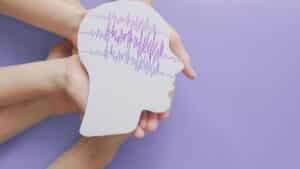
Causes of Seizures in Children
Seizures in children can arise from various causes, each with its unique set of triggers and risk factors. Low blood sugar, often due to irregular meals or diabetes management, can lead to seizures. Trauma, such as a head injury, is another common cause. At the same time, infections, especially in the central nervous system, can also trigger seizures. High fever, which may be linked to illnesses, can also result in seizures. More severe causes include stroke, brain tumours, and arteriovenous malformations (AVMs), abnormal tangles of brain blood vessels. Certain medications, mainly if not properly prescribed or managed, can lead to seizures, and there can also be genetic or hereditary factors in some cases. Understanding the potential causes is crucial for the diagnosis and effective treatment of children experiencing seizures.
- Low Sugar
- Trauma
- Infection
- High fever
- Stroke
- Brain tumour
- Brain AVM ( mesh of blood vessels)
- Certain medications
- Genetic or hereditary causes
First Aid for Seizures in Children
If you suspect that a child is having a seizure, follow these steps to provide appropriate first aid:
- Stay Calm: It's crucial to remain calm and reassure others around you. Most seizures in children are not life-threatening, and the child is likely to recover.
- Time It: Note the time when the seizure starts. This will help medical professionals if the seizure lasts longer than expected.
- Ensure Safety: Gently guide the child to a safe place, away from sharp objects or hazards. Lay them down on their side to prevent choking on saliva or vomit.
- Do Not Hold Them Down: Avoid trying to restrain the child's movements during the seizure. This can lead to injury and will not stop the seizure.
- Protect the Head: Place a soft cushion or something similar under the child's head to protect it from injury.
- Loosen Tight Clothing: If the child has tight clothing around their neck, such as a collar or tie, loosen it to ensure proper breathing.
- Do Not Put Anything in the Mouth: Contrary to popular belief, putting anything in the child's mouth during a seizure is unnecessary. This can be dangerous and may lead to injury.
- Stay with the Child: Remain with the child until they regain consciousness or until medical help arrives. After the seizure, the child may be disoriented and confused, and your presence can be reassuring.
- Comfort and Reassure: Once the seizure has ended, gently comfort and reassure the child. They may be confused and scared.
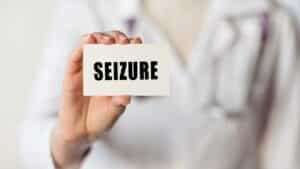
When to Seek Medical Attention From a Paediatric Neurologist
For any seizure, you should see a Paediatric neurologist. It is crucial to figure out the cause of seizures, and if needed, a seizure medicine should be started. Around 10% of children may have only one seizure and will not need medicated. This decision can be made after a neurologist has seen your child and done the workup essential to rule out other causes of seizures.
The following are scenarios where you should see a Neurologist sooner
The seizure lasts longer than five minutes.
Another seizure follows immediately after the first one.
The child has difficulty breathing or turns blue during the seizure.
The child is injured during the seizure.
The child has a known medical condition, such as diabetes, that may be related to the seizure.
The child has never had a seizure before.
Conclusion
Seizures in Children are scary to watch, but most of the time, they can be controlled easily without leaving any long-term deficits. The treatment and prevention of seizures always start with awareness of this disease and recognizing the underlying cause of the seizure. A child will need not only medical support but also psychological support from the parents and friends. Do not worry that your child may have epilepsy and face hurdles in life, as that is a baseless assumption. People with epilepsy have very productive lives and careers, just like someone with any other disease.


